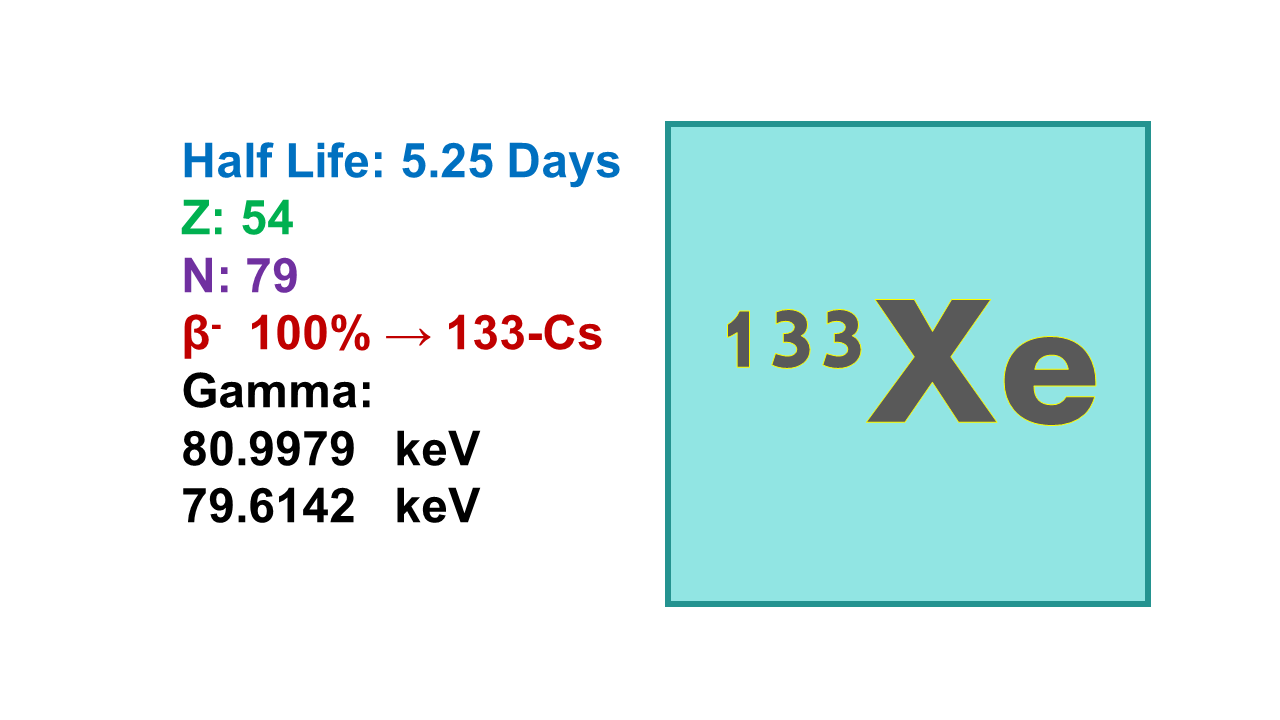
Xenon-133 (133Xe)
February 5, 2024
Properties:
Xenon-133 (133Xe) is a beta emitter at 346 keV (95%) with a half-life of 5.24 days. It is available only as a gas form or a gas dissolved in saline.
Manufacturing:
Xenon-133 is a by-product of the thermal neutron-induced fission of Uranium-235 [235U(n,f)133Xe] that at the same time leads to larger amounts of 99Mo and 131I. The Xenon gas is routinely and easily separated from the other solid radionuclides. There is no other method to produce this radionuclide.
Source and availability:
As a by-product of the most useful medical radionuclides, there is a plentiful supply of 133Xe at sites producing 99Mo and 131I on a routine basis. However, the number of sites extracting the 133Xe from the irradiation mixture is very limited and in the US for example all 133Xe is imported. In the US, 133Xe can be obtained from Lantheus which remained the only supplier of the pharmaceutical grade, using in the past sources from Nordion and re-starting with IRE, Belgium in 2016. In May 2018, Mallinckrodt (Curium) reintroduced 133Xe on the US market. The product is sourced from Curium’s Petten manufacturing facility in the Netherlands using its LEU targets.
Derivatives:
133Xe is mainly used as a gas for pulmonary (lung) ventilation. It is also available in saline solution for injection. As it is chemically unreactive, it is impossible to combine this atom with any organic molecule. 133Xe can be used in aqueous solution for cerebral blood flow.
Xenon-133 could be replaced by 127Xe which has a higher resolution and a lower dosimetry to the patient, but a longer half-life. In the US about 1,500 doses of 133Xe are used per year compared to about 3,000 with 99mTc-MAA and about 1,500 with 99mTc-DTPA for the same indication of lung perfusion (Medicare figures).
Price:
The price is mainly linked to the difficulty in handling gas forms and is not really linked to the real manufacturing costs. The price of a patient dose of 133Xe for lung ventilation is in the range of a few hundred Euro (about US$ 550 in the US).
Issues:
No possibility to use this radionuclide apart from in its gas form or as a solution of the gas.
Comments:
With this non-reactive material there are no other opportunities than finding applications that need a radioactive gas. With the manufacturing constraints appearing in 2013 with the albumin macro-aggregates used in pulmonary imaging, interest for 133Xe grew again. In the US since May 2018, Mallinckrodt (Curium) started importing 133Xe again, to compete with Lantheus, but in the meantime (December 2017) Draximage obtained a MA extension for the pulmonary application for its 99mTc-DTPA. The two products are now competitors for a same indication. Technegas may come on the US market by 2021 as well.